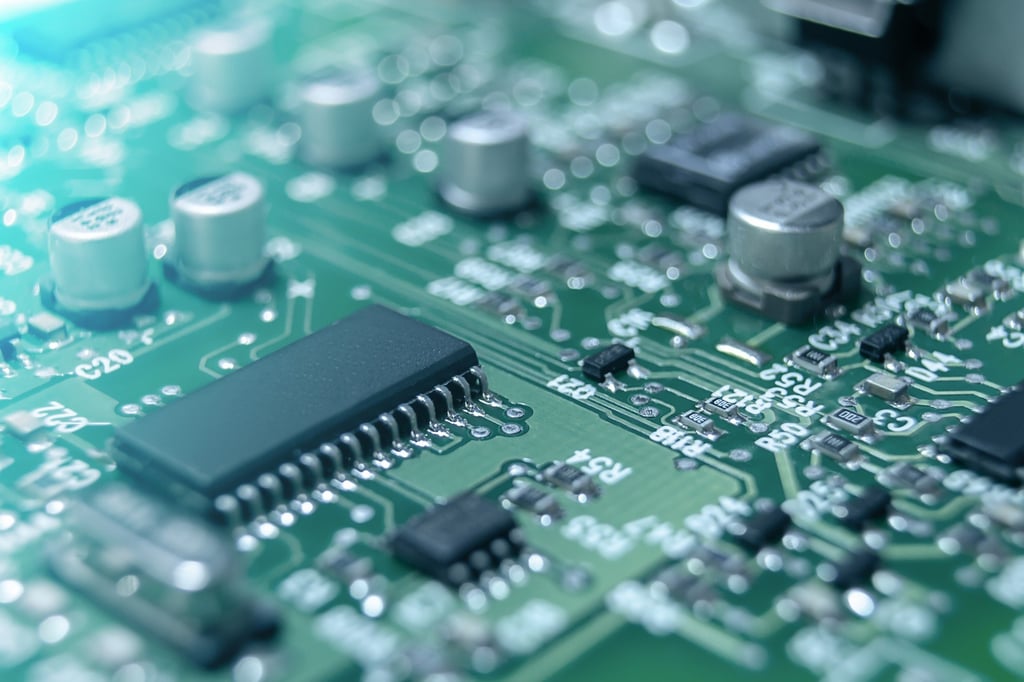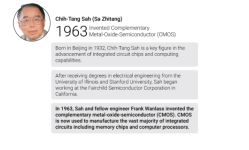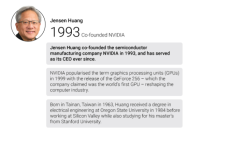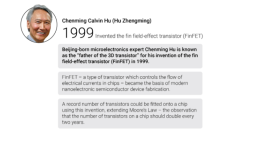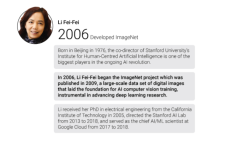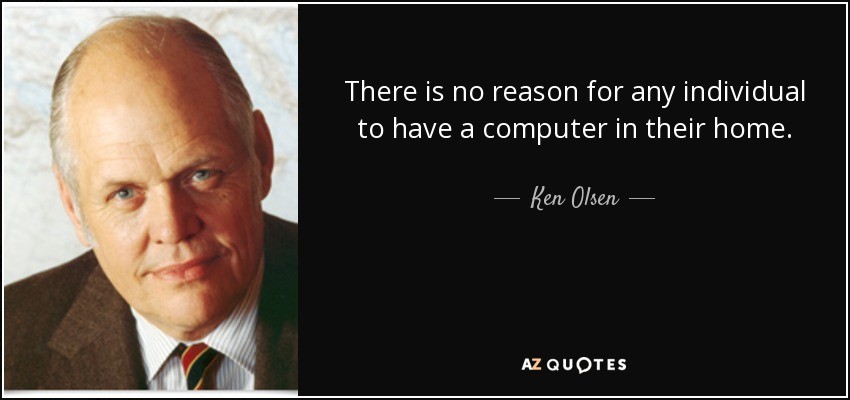As China and the US fight for dominance over key
science and
technology fields, the reality of a long-standing talent transfer between the nations underlies the field of advanced electronics.
Here the Post examines Chinese-born innovators who have contributed to the development of advanced computing in the US – and who have had a global impact.
Jeffrey Chuan Chu (Zhu Chuanju)
1946 – World’s First Electronic Computer
In 1946, the new age of computing began with the world’s first general-purpose electronic computer, known as the Electronic Numerical Integrator and Computer (ENIAC), which was developed by a team at the University of Pennsylvania.
A core member of that team was Jeffrey Chuan Chu, who is credited with designing parts of the computer’s logical structure.
Chu was born in Tianjin in 1919 and moved to the US to attend university as a result of World War II. He won the first ever Institute of Electrical and Electronics Engineers (IEEE) Computer Pioneer Award in 1981 for this early work on logic design.
Following his work on the ENIAC, in the 1940s and early 1950s Chu worked on a number of other early computer projects including Argonne National Laboratories first digital computer, AVIDAC, and the Universal Automatic Computer (UNIVAC), the first electronic digital computer designed for business.
In his 2011 obituary, his family called Chu a “computer pioneer and passionate crusader for US-China cultural exchange”.
In 1980, Chu met Deng Xiaoping and shared ideas for how China could go about modernising its technology and business, as he also outlined in a letter a year prior, many of which China ended up implementing.
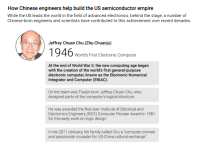

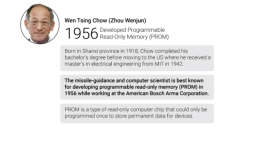
Wang An
1951 – Founded Wang Laboratories
Born in Shanghai in 1920, Wang immigrated to the US to study at Harvard University, earning his PhD in applied physics and engineering in 1948.
Just a year later, he became one of the first inventors to file a patent for magnetic core memory – a form of random access memory that became the primary way for computers to read and store data for the next two decades.
In 1951, he founded Wang Laboratories in Cambridge, Massachusetts which manufactured desktop calculators and office computers – and became a challenger to IBM.
Although the company eventually had a fall in the 1980s, it served as a major hi-tech company in the US with a lasting legacy.
Chu even briefly served as the senior vice-president of North American marketing for Wang Laboratories in the 1970s.
Wen Tsing Chow (Zhou Wenjun)
1956 – Developed Programmable Read-Only Memory (PROM)
Born in Shanxi province in 1918, Chow completed his bachelor’s degree before moving to the US where he received a master’s in electrical engineering from the Massachusetts Institute of Technology in 1942.
The missile-guidance and computer scientist is best known for developing programmable read-only memory (PROM) in 1956 while working at the American Bosch Arma Corporation.
PROM is a type of read-only computer chip that could only be programmed once to store permanent data for devices.
In the 1960s, he made significant advancements in computer-guided navigation, verifying software implementation and guidance equations for Nasa’s Project Gemini, according to a report commissioned by the Committee of 100, an organisation of Chinese-Americans.
His pioneering work allowed for the miniaturisation of computer components for use in guidance, paving the way for the implementation of digital computers in spacecraft and missiles, according to the report.
CMOS, invented by Chih-Tang Sah, is now used in the vast majority of integrated circuits in devices around the world. Photo: Shutterstock
Chih-Tang Sah (Sa Zhitang)
1963 – Invented Complementary Metal-Oxide-Semiconductor (CMOS)
Born in Beijing in 1932, Chih-Tang Sah is a key figure in the advancement of integrated circuit chips and computing capabilities.
After receiving degrees in electrical engineering from the University of Illinois and Stanford University, Sah began working at the Fairchild Semiconductor Corporation in California.
In 1963, Sah and fellow engineer Frank Wanlass invented the complementary metal-oxide-semiconductor (
CMOS), which they presented in a paper at an IEEE conference.
CMOS is now used to manufacture the vast majority of integrated circuits including memory chips and computer processors, as it creates reliable low-power electronic circuits and helps store system settings and configurations.
The development of CMOS pushed through the advancement of integrated circuits for use in phones, computers and televisions, according to the Committee of 100 report.
Jensen Huang
1993 – Co-founded NVIDIA
Jensen Huang co-founded the semiconductor manufacturing company
NVIDIA in 1993, and has served as its chief executive ever since.
NVIDIA popularised the term graphics processing units (GPUs) in 1999 with the release of the GeForce 256 – which the company claimed was the world’s first GPU – reshaping the computer industry.
Born in Tainan, Taiwan in 1963,
Huang received a degree in electrical engineering at Oregon State University in 1984 before working at Silicon Valley while also studying for his master’s from Stanford University.
Generative AI is the single most significant platform transition in computing history and will transform every industry, including gaming
Jensen Huang
NVIDIA has shifted its focus over the years to heavily emphasise the development of chips for AI computing.
“
Generative AI is the single most significant platform transition in computing history and will transform every industry, including gaming,” Huang said in a news release in January.
According to its website, the company now produces some of the most advanced AI chips and software for use in many industries including healthcare and autonomous vehicles.
Chenming Calvin Hu (Hu Zhengming)
1999 – Invented the fin field-effect transistor (FinFET)
Beijing-born microelectronics expert Chenming Hu is known as the “father of the 3D transistor” for his invention of the fin field-effect transistor (FinFET) in 1999.
FinFET – a type of transistor which controls the flow of electrical currents in chips – became the basis of modern nanoelectronic
semiconductor device fabrication.
A record number of transistors could be fitted onto a chip using this invention, extending
Moore’s Law – the observation that the number of transistors on a chip should double every two years – which many thought would soon die.
US proposes new round of tariffs on China in latest trade war escalation
This invention of a finlike transistor that took up less surface area than 2D transistors allowed for the development of higher processing capabilities on increasingly smaller devices.
After completing his bachelor’s degree in Taipei, the electrical engineer completed his master’s and PhD at the University of California, Berkeley. He served as the chief technology officer of the Taiwan Semiconductor Manufacturing Company from 2001 to 2004.
In 2014, Hu was awarded the US National Medal of Technology and Innovation by Barack Obama for his pioneering work on transistors.
Li Fei-Fei
2006 – Developed ImageNet
Born in Beijing in 1976, the former vice-president of Google and current co-director of Stanford University’s Institute for Human-Centred Artificial Intelligence (HAI) is one of the biggest players in the ongoing
AI revolution.
In 2006,
Li Fei-Fei began the ImageNet project which was published in 2009, a large-scale data set of digital images that laid the foundation for AI computer vision training, instrumental in advancing deep learning research.
Li received her PhD in electrical engineering from the California Institute of Technology in 2005, directed the Stanford AI Lab from 2013 to 2018, and served as the chief AI/ML scientist at Google Cloud from 2017 to 2018.
Her work now focuses on the development of cognitively inspired AI, especially for use in healthcare.
Li is this year’s recipient of the IEEE computer pioneer award for her work in advancing computer vision, particularly for the development of ImageNet.
She is the second Chinese-born recipient of this award – the same one Jeffrey Chuan Chu was the first ever recipient over just over 40 years ago.
US domination of the field of advanced electronics has been propelled in part by many Chinese academics.

www.scmp.com







